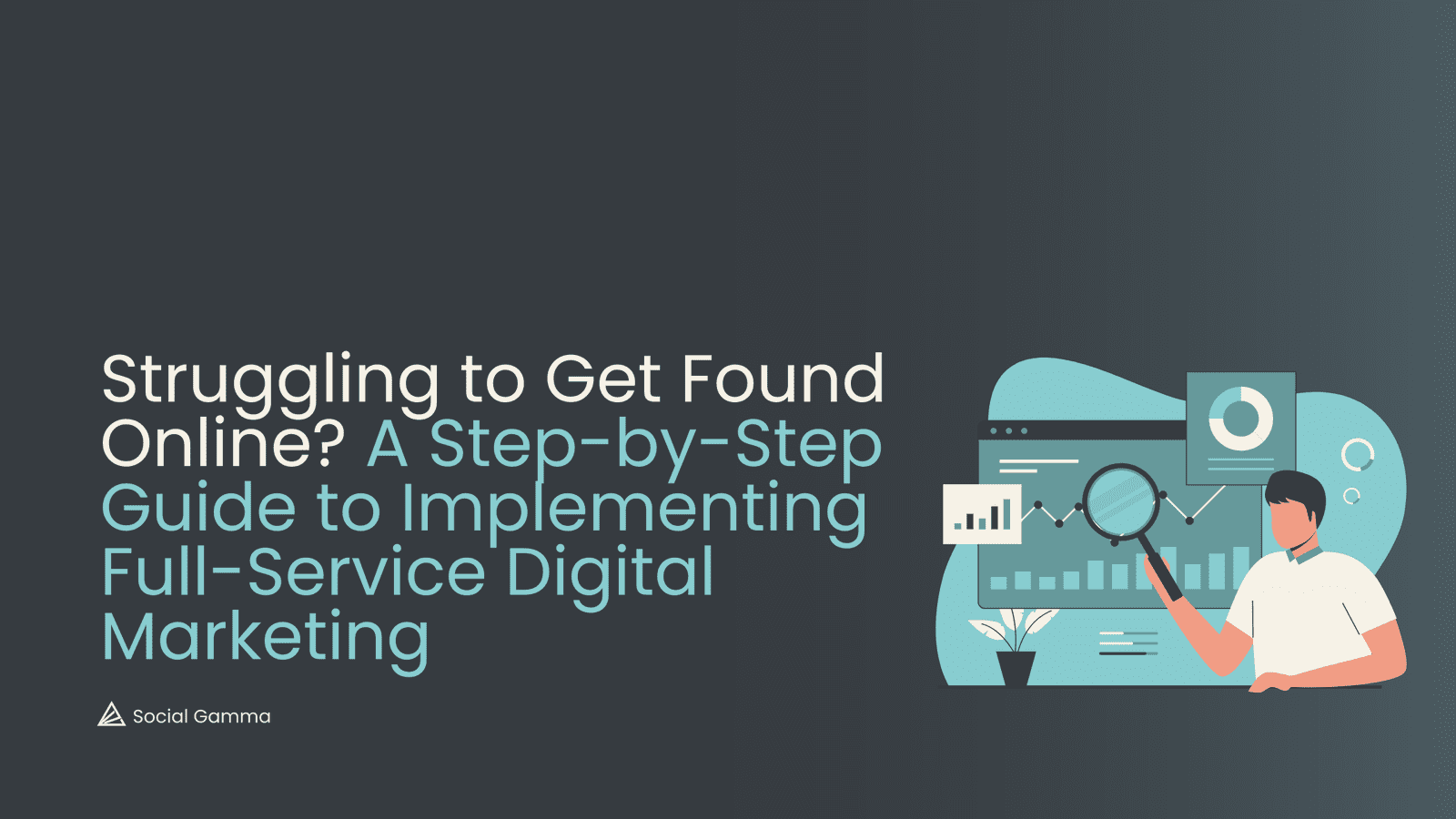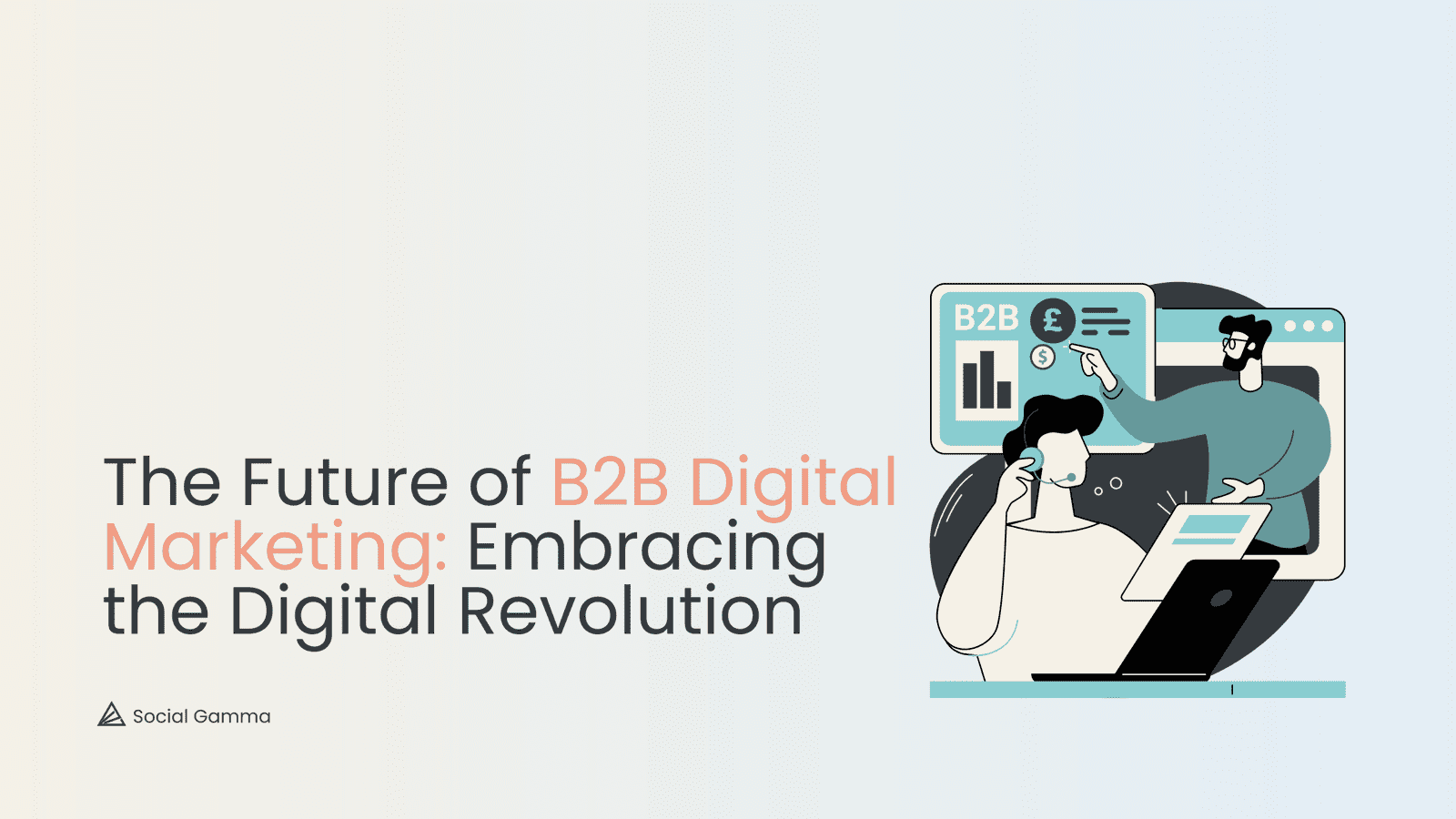Optimised and data-driven marketing budgets are essential for the growth and success of any company. Investing in marketing can help you build brand recognition, generate leads, and attract new customers. However, allocating funds to marketing can be challenging, especially in cases where budgets are limited.
As such, it is important to optimise your marketing budget to maximise its effectiveness.
Data-driven budgeting also allows for more accurate measurement of the results of your marketing efforts and helps identify areas where improvements can be made.
By looking at data on costs versus returns, you can work to optimise your campaigns and allocate your budget accordingly. This approach ensures that resources are being used in the most effective way possible and that your marketing efforts are generating tangible returns.
Contents
Why a Data-Driven Approach?
Collecting and analysing data from your marketing initiatives allows you to:
- Understand the efficiency of each campaign
- Determine the channels that provide the best ROI
- Identify the customer segments that are most responsive
- Predict future trends and customer behaviours
By using these insights, you can allocate your marketing budget in a way that maximises ROI and enhances customer engagement.
Data-driven budgeting is an essential part of a successful marketing strategy, providing you with the insights you need to make effective decisions and continuously improve your campaigns. With data-driven budgeting, you can ensure that every penny spent on marketing initiatives is put to good use.
Data-Driven Tools and Techniques
Data-driven budgeting requires the use of sophisticated tools and techniques. These include:
- A/B testing to compare the effectiveness of different campaigns
- Segmentation analysis to create customer cohorts
- Predictive analytics to anticipate future behaviours
- Machine learning algorithms to identify useful patterns
By leveraging these tools and techniques, you can make informed decisions when allocating your marketing budget.
Steps to Implement a Data-Driven Approach
- Data Collection: Gather all data related to your marketing initiatives. This includes metrics like click-through rates, conversion rates, customer acquisition costs, and customer lifetime value.
- Data Analysis: Use statistical tools and techniques to analyse this data. Look for patterns, correlations, and trends that can enhance your marketing strategy.
- Insight Application: Use the insights gained from the data analysis to make informed decisions about where to allocate your marketing budget.
- Performance Review: Regularly review the performance of your marketing initiatives to ensure they are delivering the expected ROI. Adjust your budget allocation as necessary based on these reviews.
By following a data-driven approach to budgeting, you can ensure that your marketing initiatives are delivering the best possible return on investment.
A/B Testing for Maximum Impact
A/B testing is a great way to test different marketing initiatives and decide which ones are most effective. This involves testing two versions of a campaign, then measuring the performance of each one in order to identify which performs better. Once you have identified the best-performing version, you can allocate more resources to that initiative.
A/B testing is an invaluable tool for budgeting decisions. By taking the time to test different ideas, you can ensure that your marketing efforts are going towards initiatives that will deliver maximum ROI.
Developing a Data-Driven Culture
In order to make data-driven decisions, it’s important to develop a data-driven culture across your business. This means creating an environment that encourages the use of data and analytics to inform decisions. To do this, train your team members on how to use data and analytics tools effectively, and provide regular feedback on their performance.
It’s also important to ensure that everyone in the organisation has access to the same datasets. This helps to ensure that everyone is working from the same information and no one is making decisions based on incomplete data.
Navigating Potential Challenges
While a data-driven approach offers many benefits, it can also present several challenges. These include data collection and privacy issues, integrating disparate data sources, and keeping up with changing technology trends. However, with the right tools and strategies, these challenges can be successfully navigated.
Here is a more detailed list of potential challenges that may arise when adopting a data-driven approach:
- Data Collection: Collecting comprehensive, accurate data can be a significant task. It requires effective strategies to ensure the information collected is reliable and relevant to the business objectives.
- Data Privacy: With increasing scrutiny on data handling practices, businesses must ensure they adhere to data privacy regulations. This includes obtaining necessary permissions to use data and ensuring that the data is stored and handled securely.
- Integration of Data Sources: Businesses often collect data from various sources, which can lead to inconsistencies and data silos. Integrating these disparate data sources into a unified system can be a challenging process.
- Technological Evolution: Keeping up with the ever-changing landscape of data analytics platforms and technologies can be challenging. This of course requires continuous learning and adaption.
- Data Literacy: Not everyone within an organisation may be comfortable with interpreting and using data. Training and supporting team members in becoming data literate is essential.
Each of these challenges necessitates careful planning and strategic solutions. With a dedicated approach, you can overcome these obstacles and successfully utilise the power of data-driven decision-making.
Solutions to Overcome Challenges
To effectively address the challenges associated with a data-driven approach, several solutions can be considered:
- Implementing robust data management systems: A well-structured data management system can streamline the process of collecting, storing, and analysing data, thereby reducing complications.
- Adopting privacy measures: Ensure compliance with data privacy regulations by incorporating stringent measures to safeguard user data.
- Integrating data sources: Leverage tools that can integrate data sources to provide a unified view of information, facilitating more comprehensive and accurate decision-making.
- Continuous learning and adaptation: Technology trends are rapidly evolving. As such, constant learning and adaptation are crucial. Encourage your team to keep up with the latest tools, trends, and best practices in data analysis and application.
By employing these measures, the challenges linked to data-driven decision-making can be effectively managed, enabling your organisation to fully harness the potential of data analytics.
Creating a Data-Driven Budget
A data-driven budget is a fundamental component of any organisation. With the help of data, you can create detailed financial plans that are tailored to your specific needs and goals.
When devising a budget based on data, consider the following steps:
- Identify key metrics: These are the metrics that will be used to measure your business performance.
- Estimate future trends: Use historical data and industry benchmarks to identify likely trends in the future.
- Set goals: Based on the expected trends, set budget goals that align with the company’s objectives and long-term vision.
- Assign resources: Establish which resources will be necessary to meet the budget goals and ensure that these resources are allocated accordingly.
- Monitor performance: Regularly track and monitor budget performance in order to identify any potential risks or opportunities. Make adjustments as and when they are required.
By following these steps, you can create a powerful data-driven budget that will provide them with clarity and accuracy, guiding your decision-making process in the most effective way. The importance of budgeting from data cannot be overstated. Data-driven budgets help to optimise your business performance, minimise risk, and maximise returns – all key ingredients for success.
The Key Takeaway
Adopting a data-driven approach to optimise your marketing budget can significantly enhance your marketing efficiency and ROI. It allows you to make informed decisions that are based on solid evidence rather than just using intuition or guesswork.
Data-driven budgeting is also a smart way to ensure that the resources you have are being allocated in an effective and efficient manner.
By tracking your progress and continually optimising your budget, you can achieve maximum results while avoiding costly mistakes. With data-driven budgeting in place, you can look forward to improved performance, increased efficiencies and a higher ROI
The data-driven budgeting process can enhance the potential of your marketing efforts and help you reach your business goals more quickly and efficiently. By taking advantage of this approach, you can ensure that you are making smart decisions to get the most out of your budget.
In summary
- A data-driven approach to budgeting serves as a crucial tool in enhancing marketing efficiency, yielding high Return on Investment (ROI), and driving decision-making.
- Data-driven budgeting optimises business performance, minimises risk, and maximises returns, ensuring efficient use of resources and avoiding unnecessary expenses.
- The challenges associated with this approach can be mitigated with thorough planning and the right resources, making it a viable option for businesses of all sizes.
- Regular tracking and optimisation of the budget using a data-driven approach lead to continuous improvements in performance and greater efficiencies.
- Harnessing the power of data not only improves marketing outcomes but also accelerates the process of achieving business goals.
- The use of data in budgeting ensures informed decisions that are based on solid evidence rather than intuition, leading to smarter strategies and maximised returns.
About us
At Social Gamma, our digital marketing solutions merge empowerment and expertise, driven by meticulous analysis and unrivaled insights that breathe life into your aspirations.
We embrace the art and science of digital marketing, combining data-driven strategies with human insights to create impactful campaigns that leave a lasting impression.
We’re big enough to achieve, but small enough to care.
Do you want to know more?
If you found this article interesting and useful, follow us on our social media channels to stay updated with our weekly digital marketing insights.
If you want to learn more about our services then contact us!


